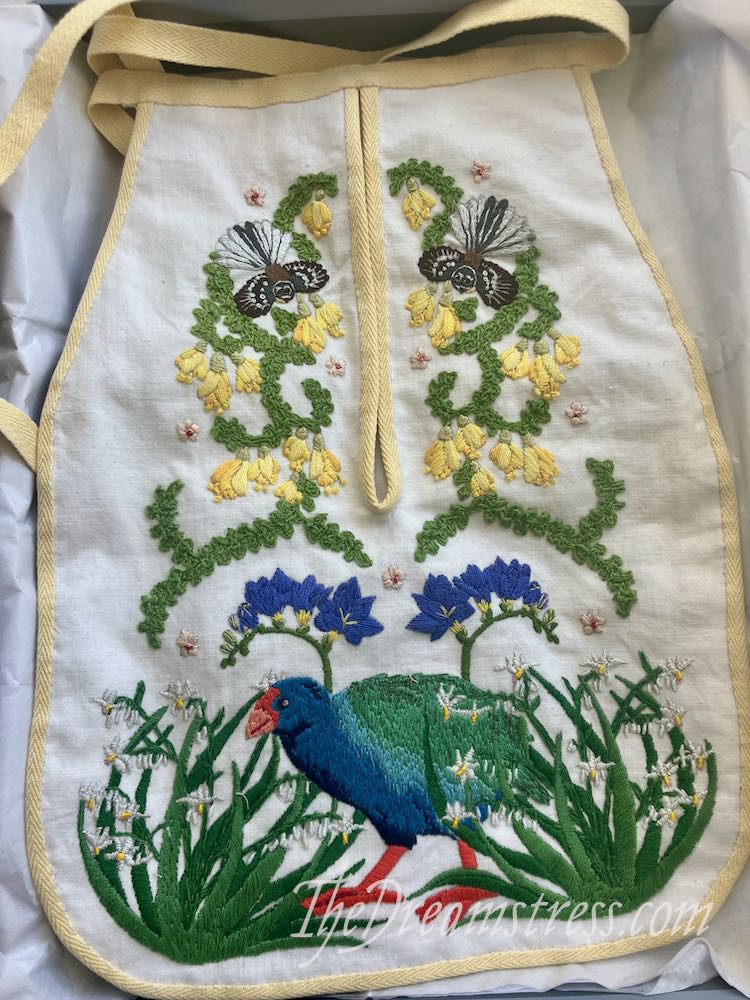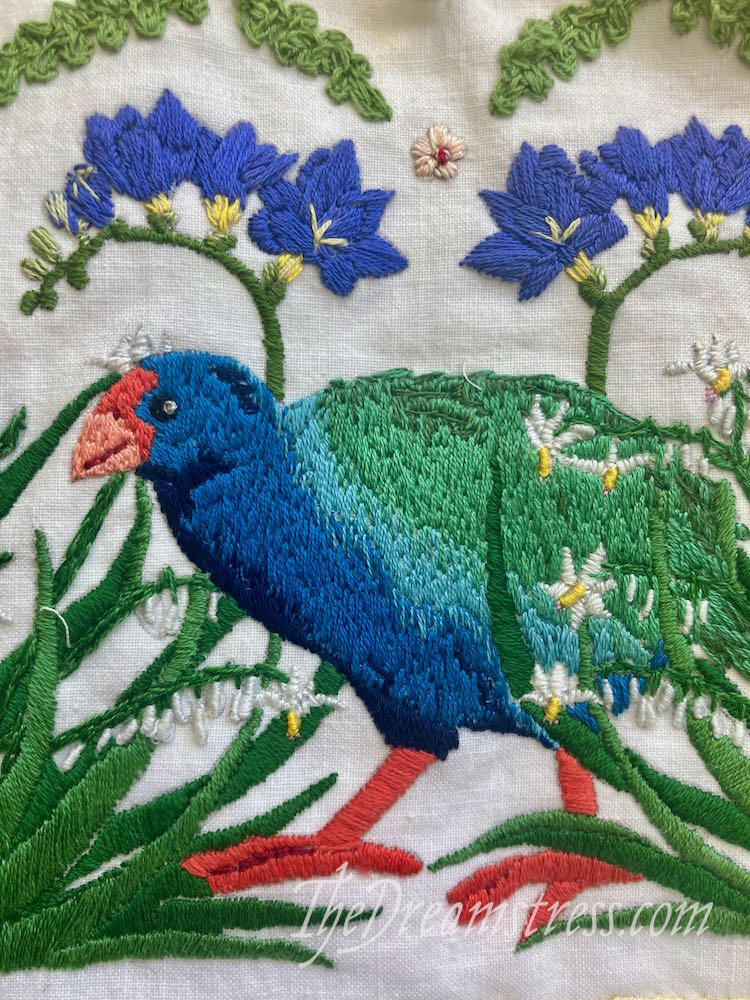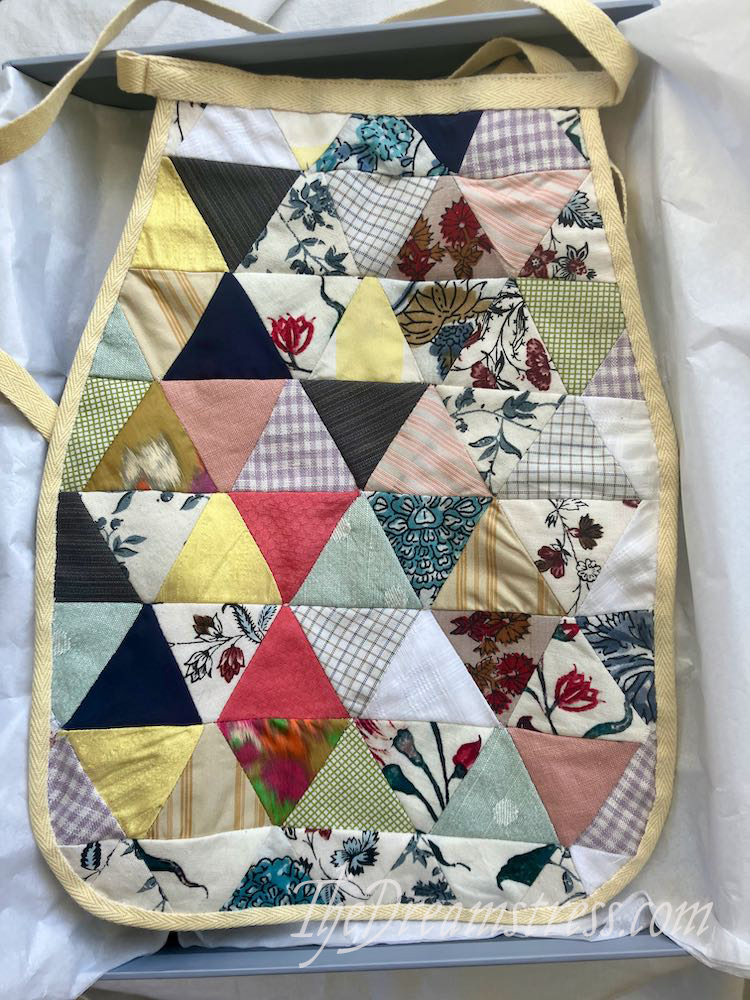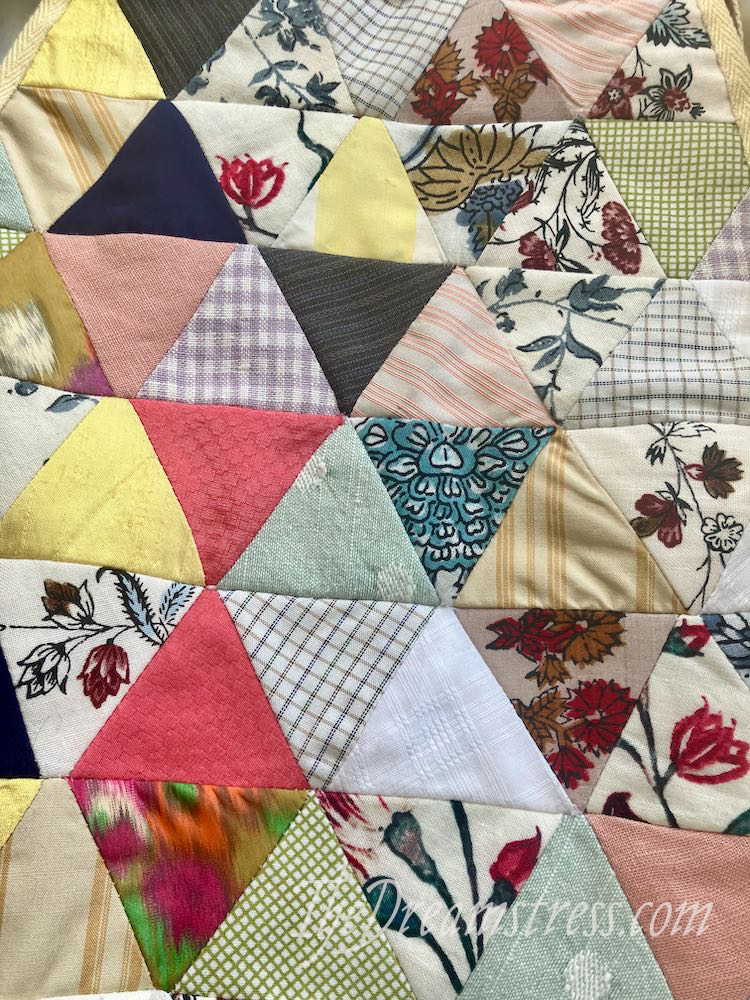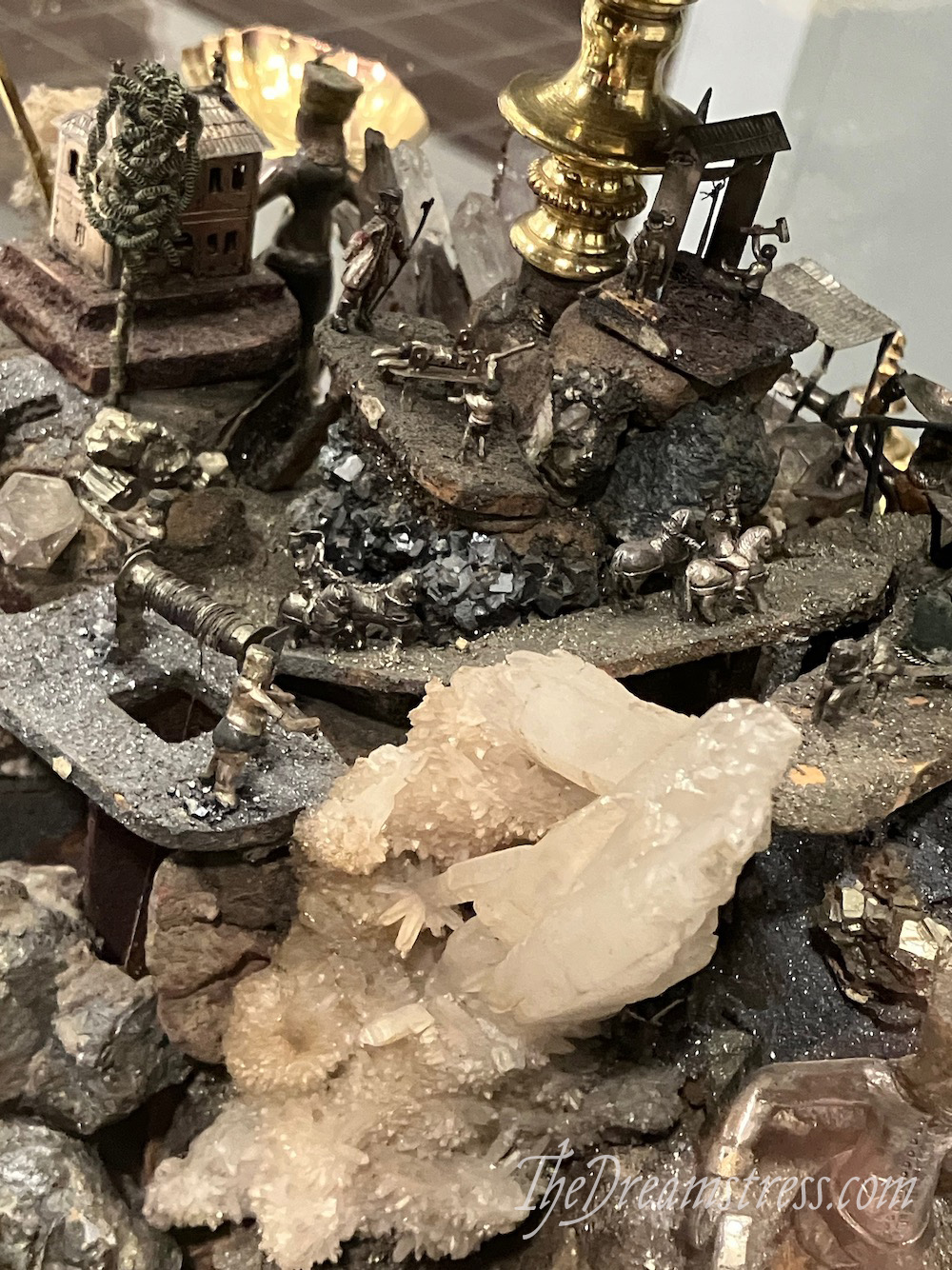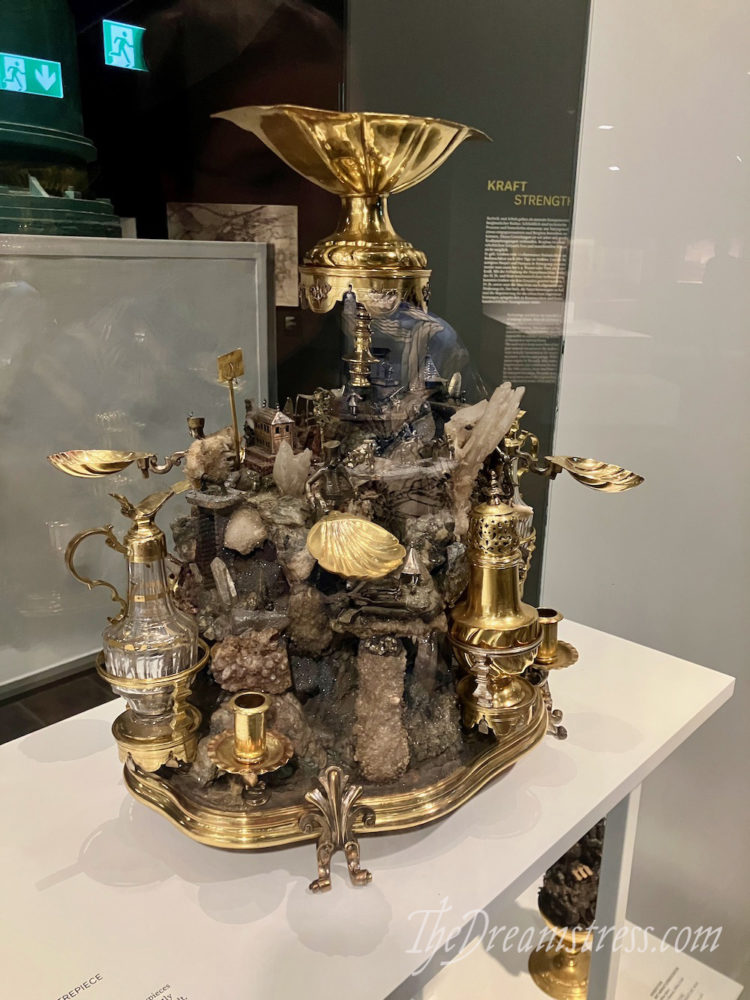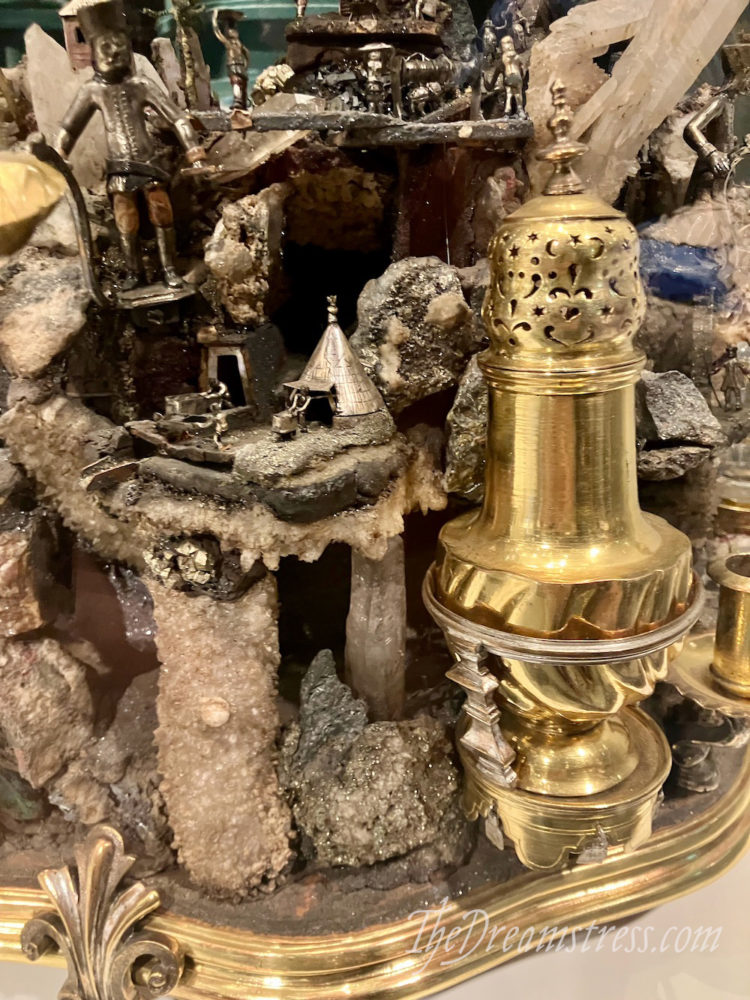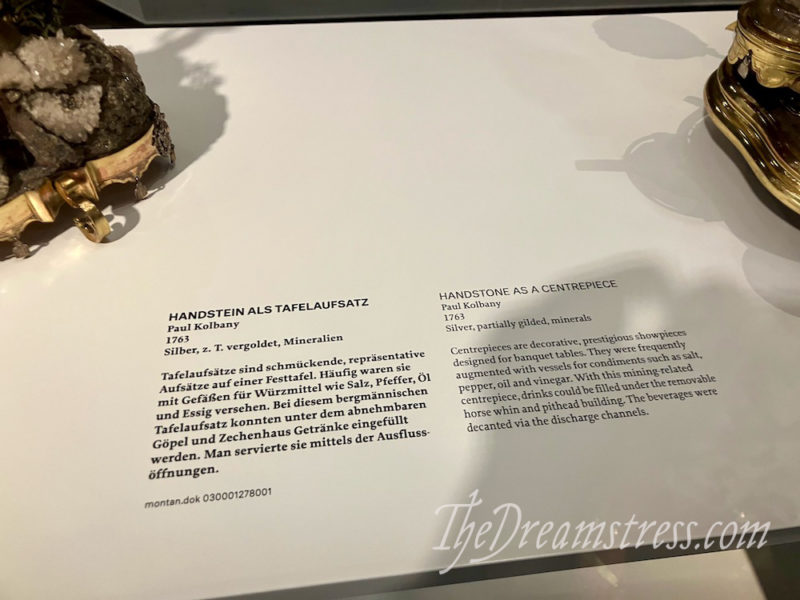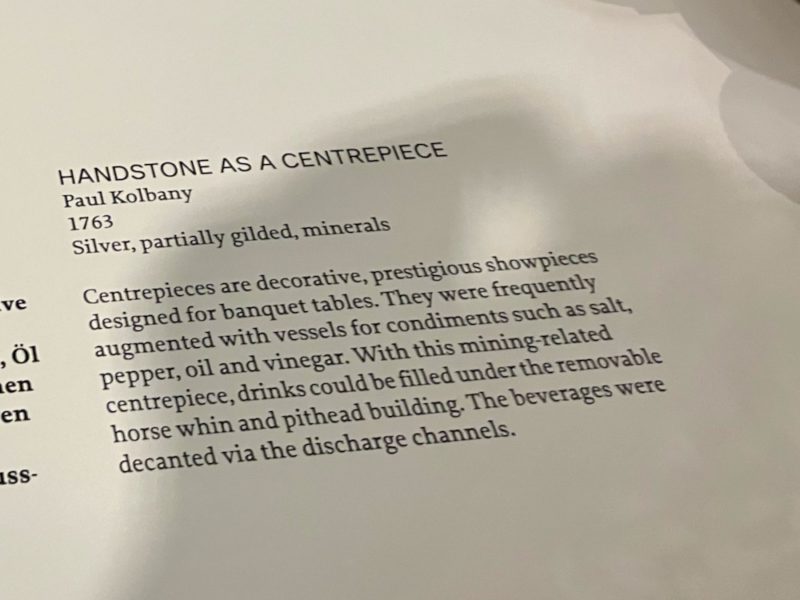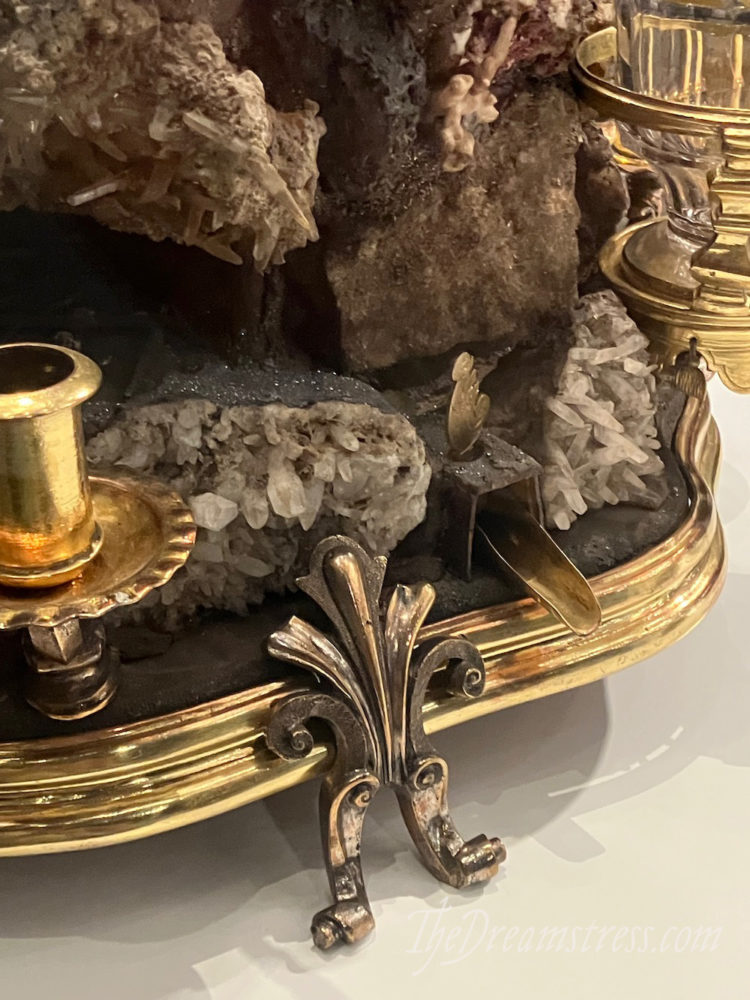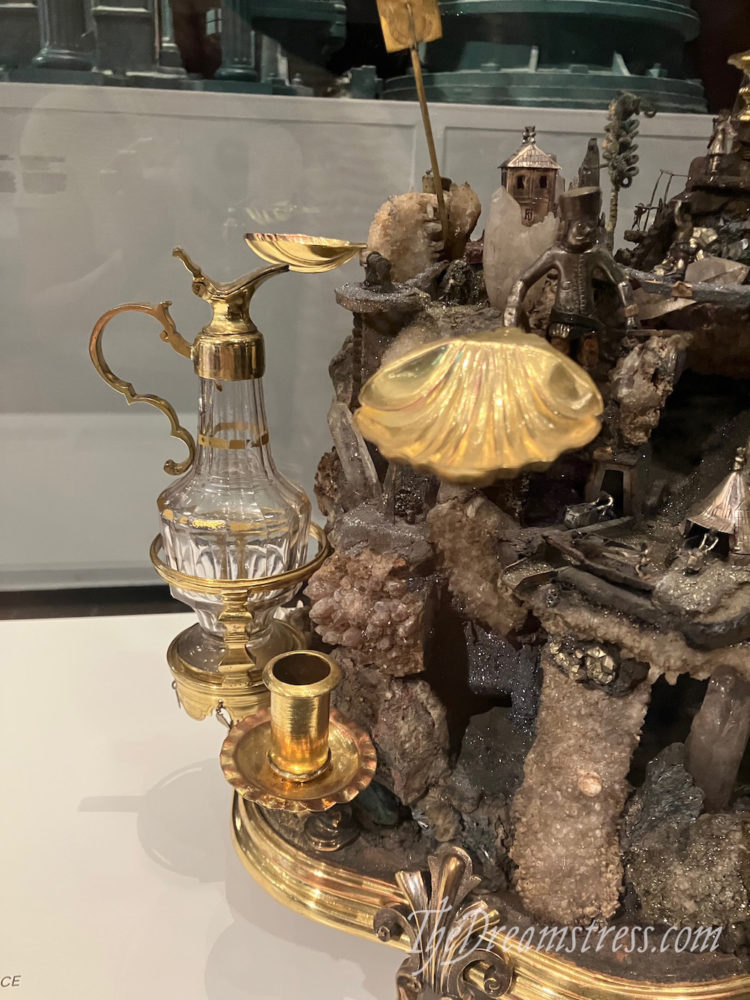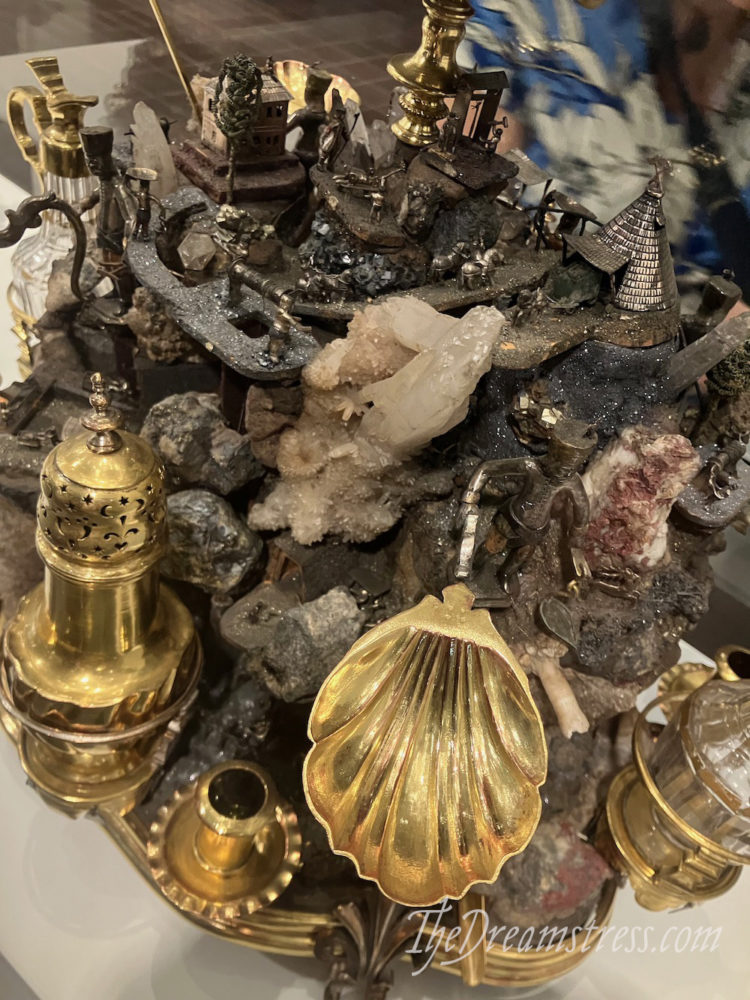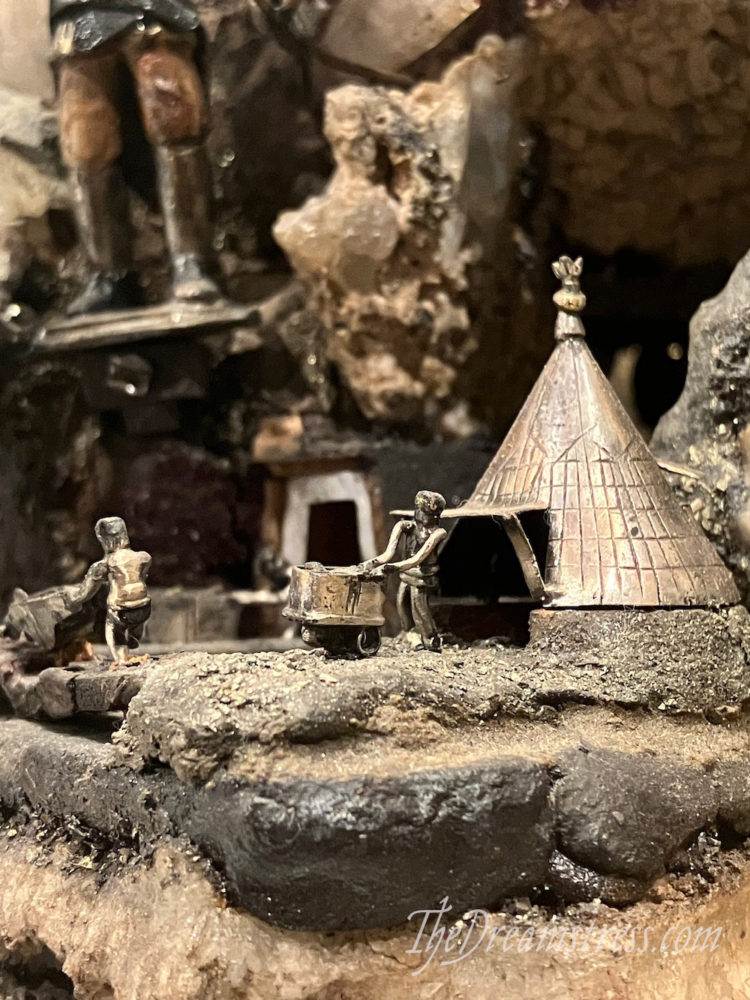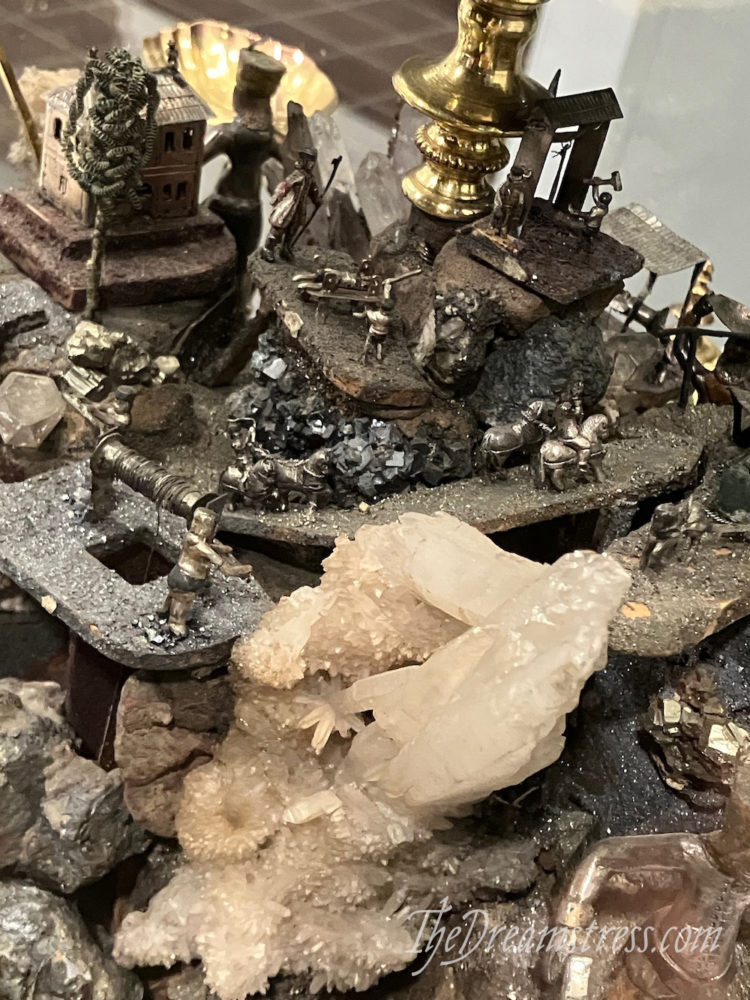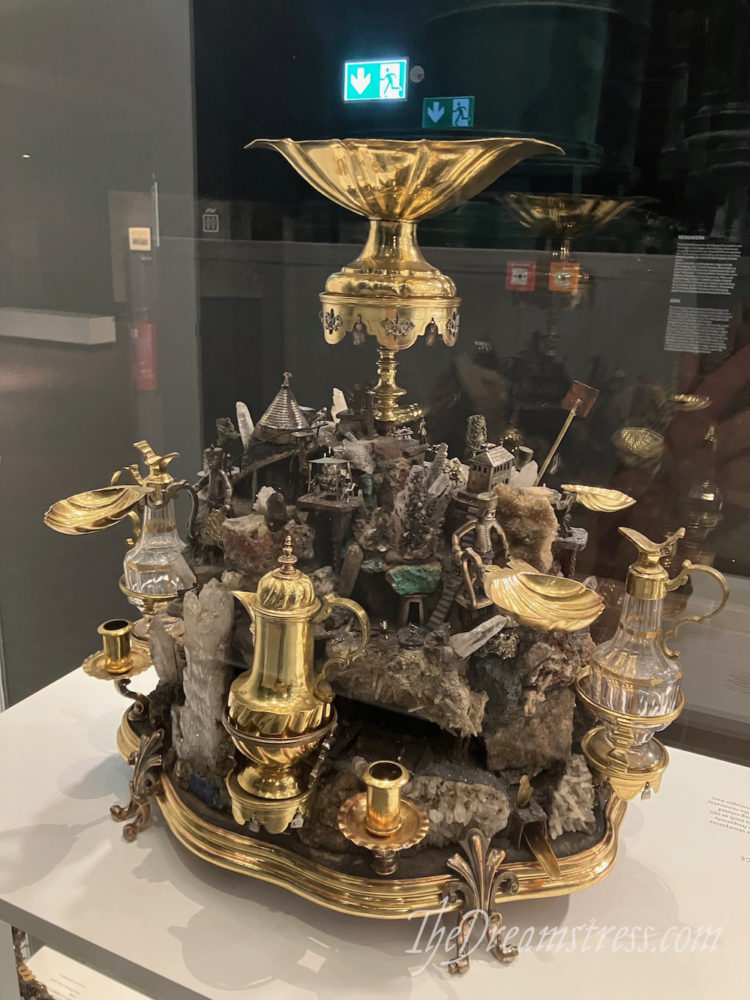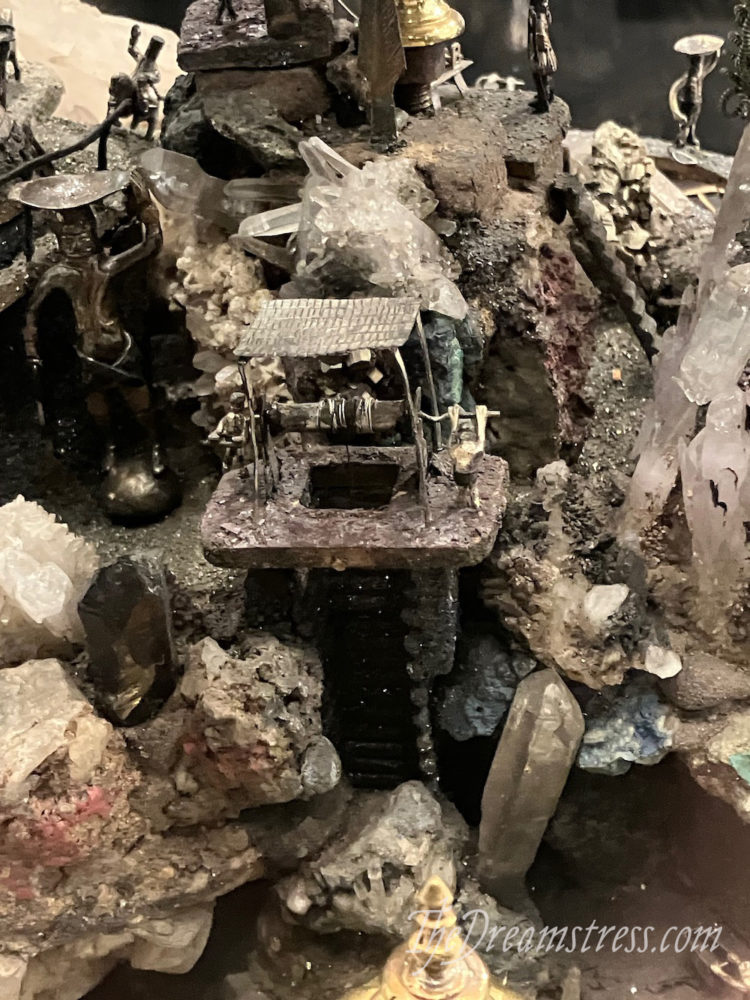I have a running joke with my student’s at Toi Whakaari that I’m ancient. “3,000 years ago, when I was your age….” and “yeah, now that I’m a bit older I can’t handle alcohol at all. Back at that dinner where that guy turned water into wine I could drink it like it was water, and in my quaffing days, quaffing was no issue, but now…”* According to class lore, I’m so good at costume history I was actually there.
And it’s a joke, but right now I feel ancient, and the days run together. So apologies if this isn’t quite a week since the last one.
Some of you really loved last week’s velvet dress, but others felt that it was it was so classic that it became almost a cliche of its decade.
The Total: 7.9 out of 10
A perfectly competent, acceptable rating, but not one to smash any records.
This week: An 1890s reception gown in ivory with black lace
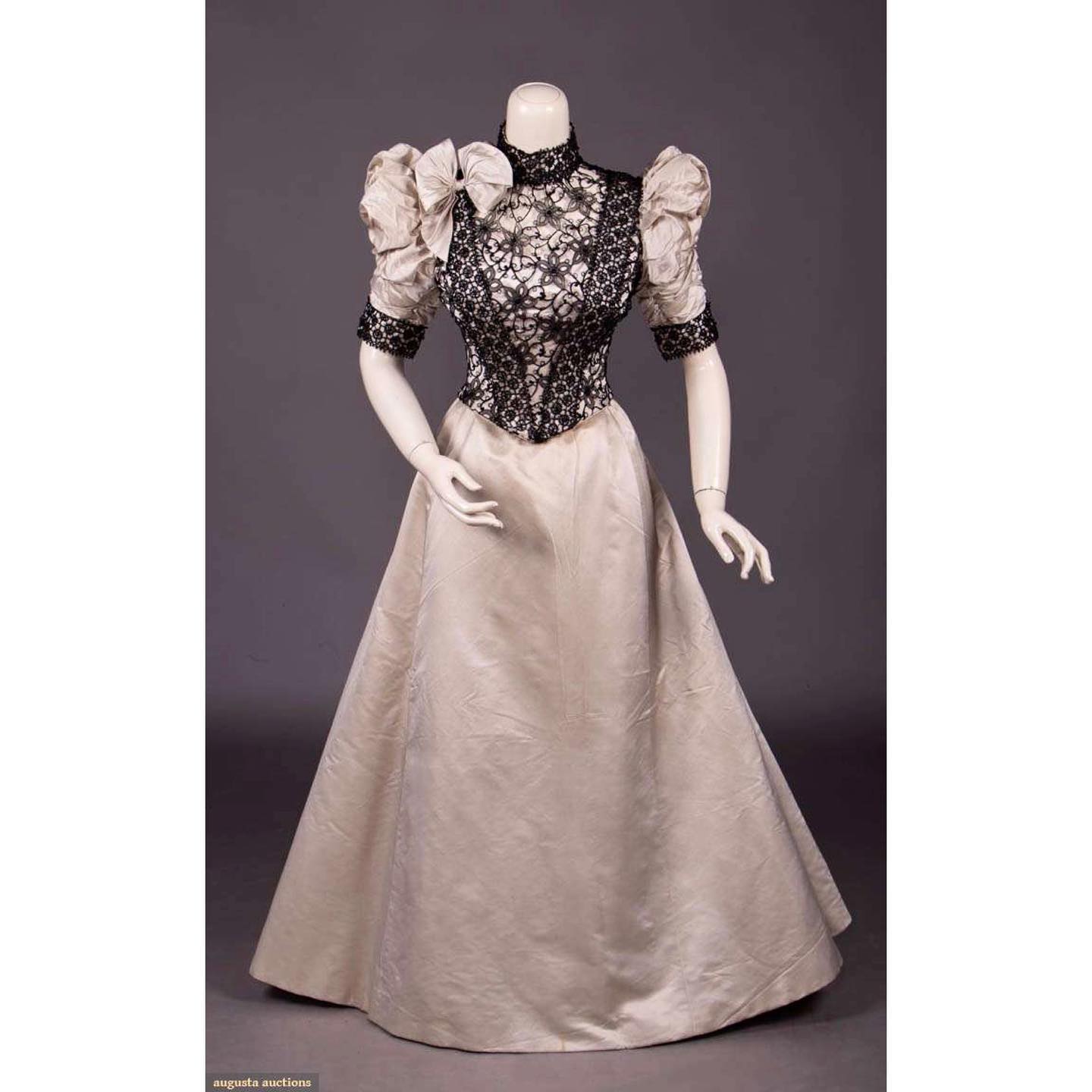
Two-piece twill silk satin gown, silk organza & chemical lace bodice w inserts of French jet beading, ca 1893, sold by Augusta Auctions
The last Rate the Dress was inspired by the Baltic Sea. This week’s dress is inspired by something else that fascinated me in Europe: the fabulous doors. Now, who hasn’t gone to Europe and taken 600 photographs of beautiful doors?
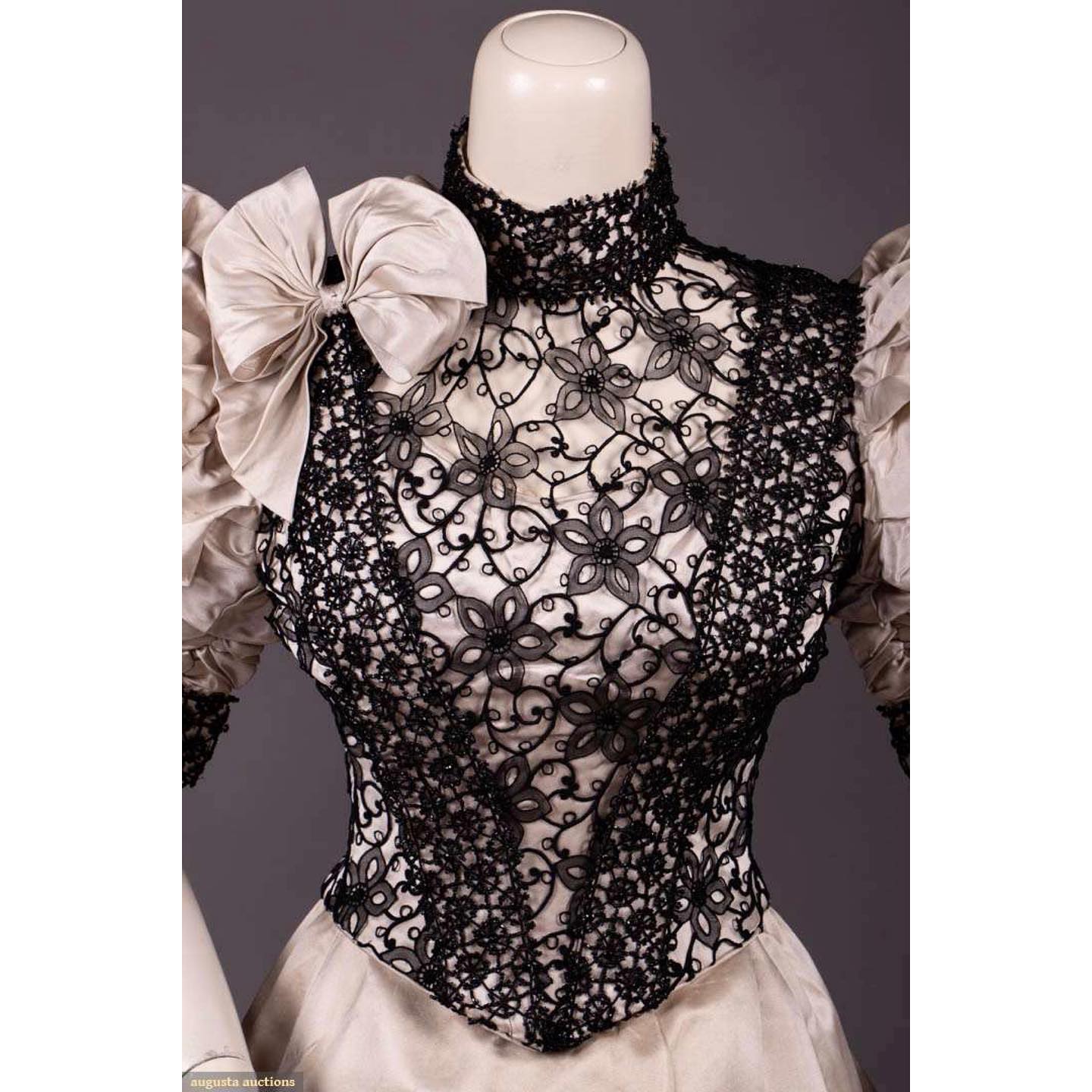
Two-piece twill silk satin gown, silk organza & chemical lace bodice w inserts of French jet beading, ca 1893, sold by Augusta Auctions
It’s the lace bodice trim on this formal reception gown that reminds me of doors. So many that I saw were wood carved in very deep geometric patterning, rather like the trim round the neck and down the bodice.
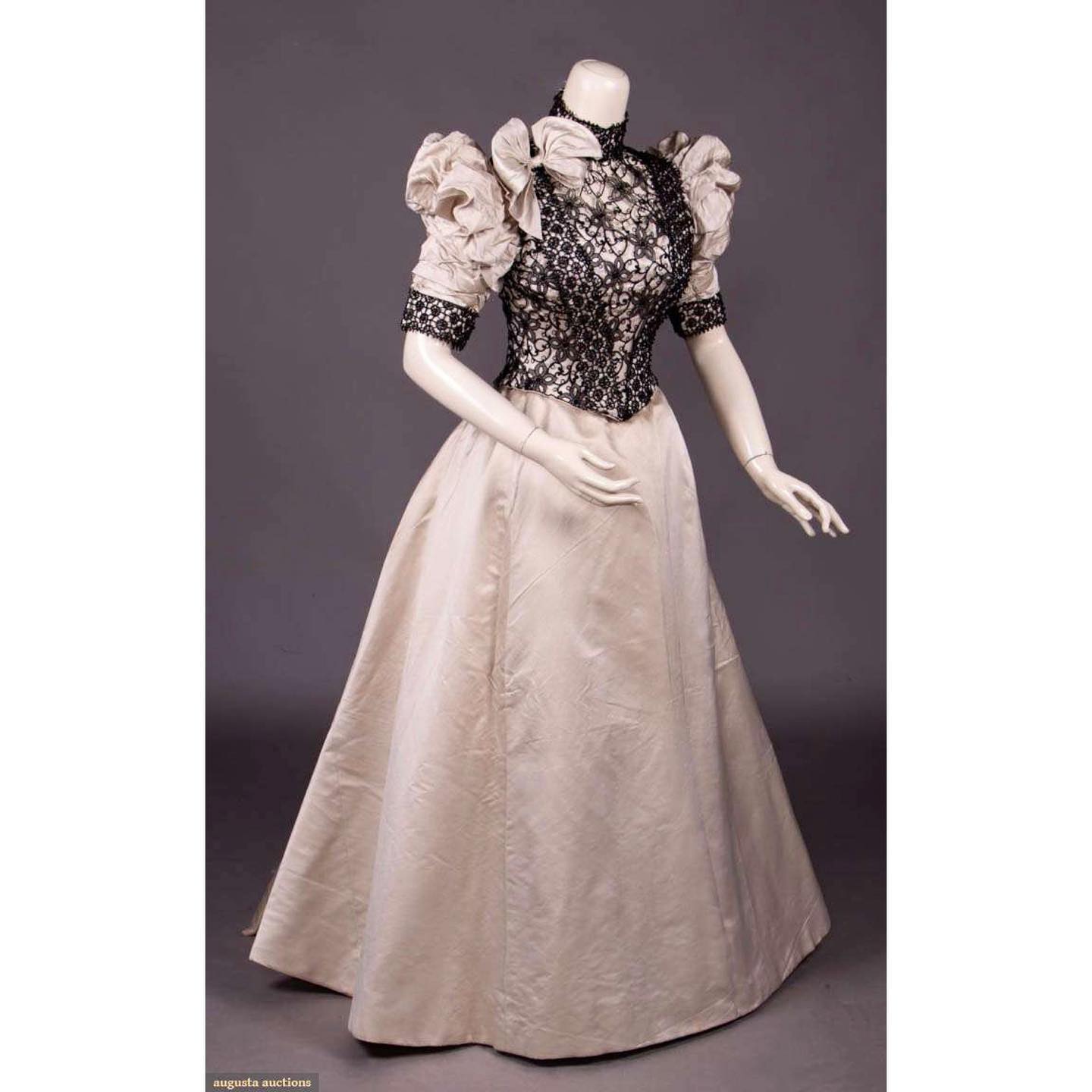
Two-piece twill silk satin gown, silk organza & chemical lace bodice w inserts of French jet beading, ca 1893, sold by Augusta Auctions
This dress is an interesting example of a change in Victorian dress etiquette. In the 1870s and 80s a gown would either have an exposed neck and chest and short sleeves, OR a high neck and long sleeves. In the early 1890s you start to see formal garments, like this dress, which pair a high neck and covered chest with elbow length sleeves. The arms would then have been covered by long over-the-elbow gloves.

Two-piece twill silk satin gown, silk organza & chemical lace bodice w inserts of French jet beading, ca 1893, sold by Augusta Auctions
Look very closely at the bodice of this dress, and you can see that the bodice lining ends at a lower neckline, so that the skin would be visible through the lace on the upper chest.

Two-piece twill silk satin gown, silk organza & chemical lace bodice w inserts of French jet beading, ca 1893, sold by Augusta Auctions
When you imagine this dress as it was worn in the last decade of the 19th century, it needs a few pieces. Add hair twisted into a topknot right at the top of the head, and worn with a little frizzled fringe, perhaps with a jet and aigret hair ornament, or an angular bow, in the topknot. If it were for an outdoor reception it might be topped with a very frilly, impractical hat.
Something like the black and white dress in this fashion plate:
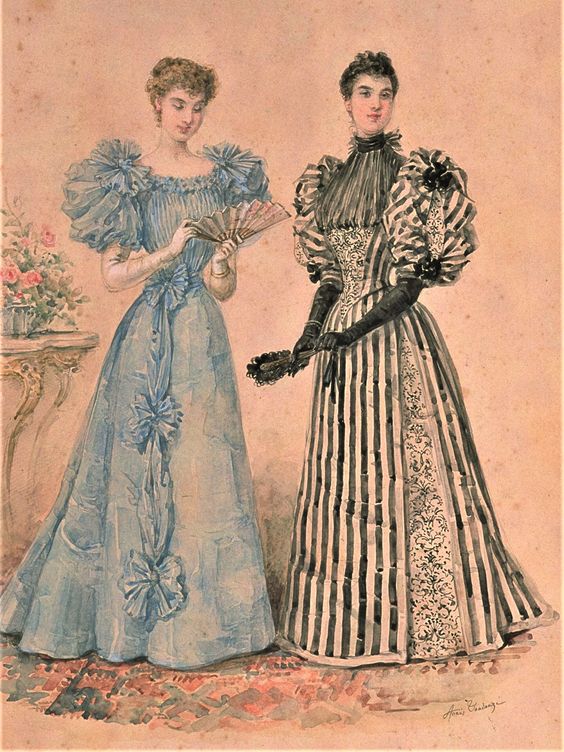
La Mode Illustree, 1894
Or the brown dress in this plate:

Although the first fashion plate shows that black was an option, I think it’s most likely this dress was worn with white gloves.
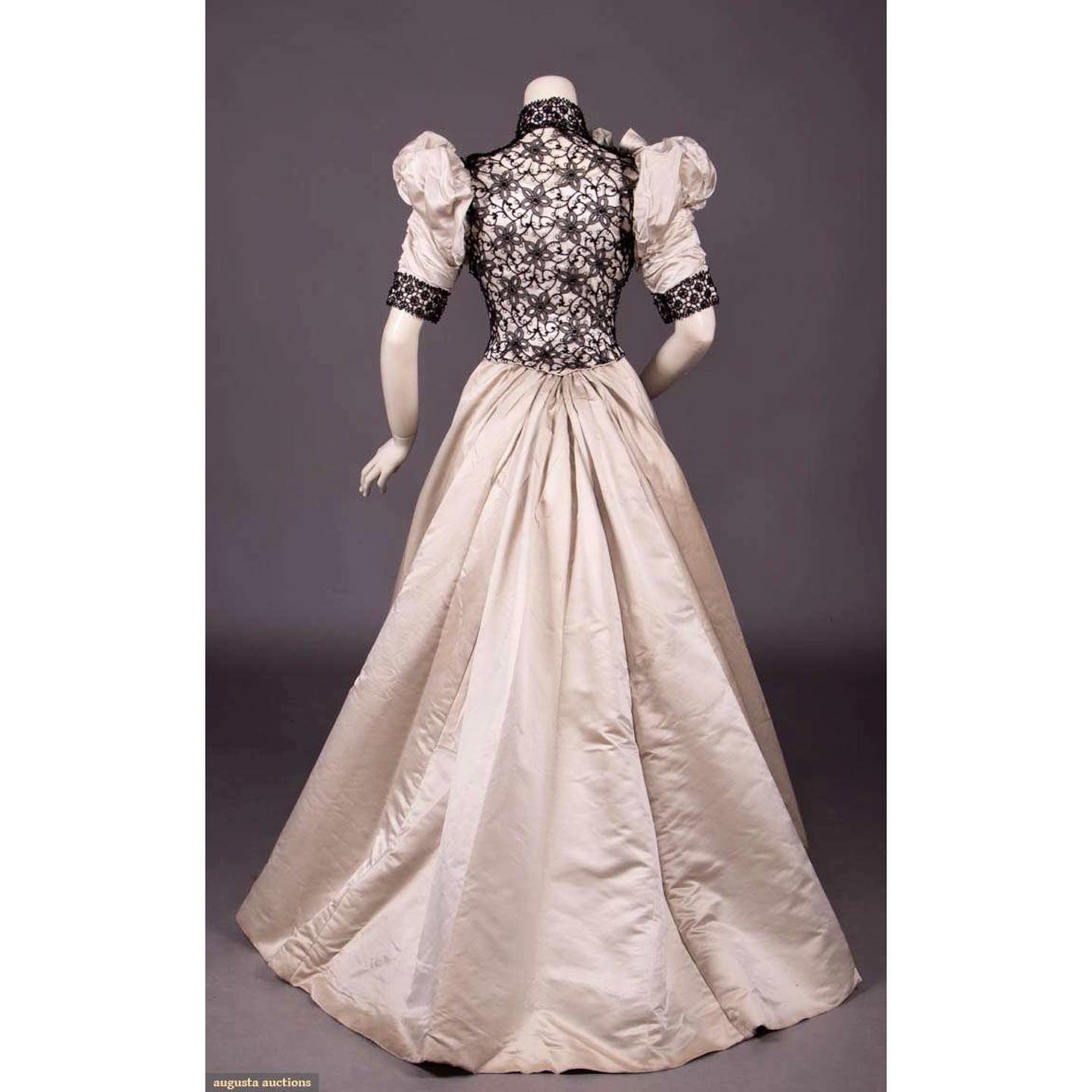
Two-piece twill silk satin gown, silk organza & chemical lace bodice w inserts of French jet beading, ca 1893, sold by Augusta Auctions
This dress was sold as ca. 1893, and the bodice shape and smaller sleeves are certainly plausible for the early 1890s, but the large umbrella skirt is more consistent with a slightly later date. The dress could also be ca 1897, after the very full sleeves of 95-96 deflate, and when skirts were very full.
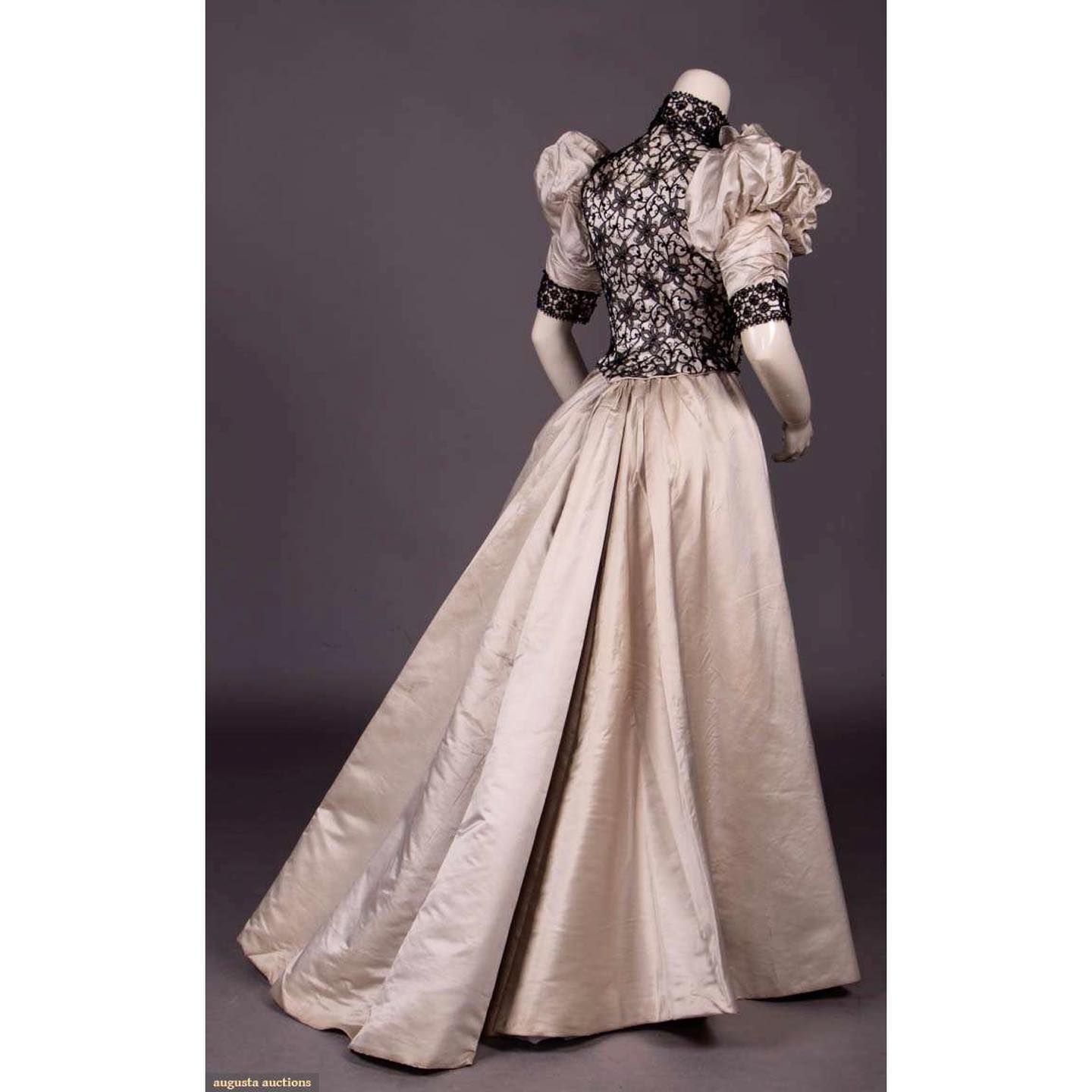
Two-piece twill silk satin gown, silk organza & chemical lace bodice w inserts of French jet beading, ca 1893, sold by Augusta Auctions
What do you think? It it a good mix of elegant, glamorous, and tastefully sexy?
Rate the Dress on a Scale of 1 to 10
A reminder about rating — feel free to be critical if you don’t like a thing, but make sure that your comments aren’t actually insulting to those who do like a garment. Phrase criticism as your opinion, rather than a flat fact. Our different tastes are what make Rate the Dress so interesting. It’s no fun when a comment implies that anyone who doesn’t agree with it, or who would wear a garment, is totally lacking in taste.
As usual, nothing more complicated than a .5. I also hugely appreciate it if you only do one rating, and set it on a line at the very end of your comment.
* this is even funnier because my students are well aware that I don’t drink at all.
